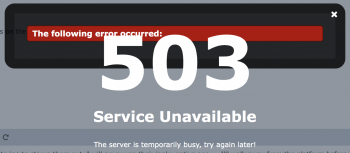Fair enough.
Interesting to know; what surprised me was that I was doing what you described as 'something passive' - i.e. just writing a post - or, about to reply to one - when this message flashed up, leaving me somewhat puzzled.
Right, that's what I was explaining in my previous post, though I realize it's getting into the weeds a bit. Let me expand on it a little.
You have the SERVER, in the simplest terms, a "computer" sitting on the internet, running code in a web server, waiting to get a request from a CLIENT, that being, for example, your browser (Safari, Chrome, etc.)
When you click a link, a different topic area, the SERVER responds with the new content (of course there's databases, code, caches, and whatnot involved on the server side). That's a super simple request > response, that's obvious to the user (since you're seeing the new URL requests, seeing the new content).
Browsers can also run code, right in the browser without the need for any server processing, this allows for client side things to occur, formatting text, animation, popping up dialogs, events "in" the browser so to speak, checking the values in a form before it's sent to the server.
So that takes us to the scenario I was describing - you're sitting on a page, the server request has completed, you've got a form, basically a text box where you're entering a message/post. Now in the browser, there is also some code running (see above), this is where it gets pretty neat with modern web technology:
The browser code reads the text you've input (on a repeating timer event), and sends that over to the server - the page doesn't refresh, because you're not requesting a different URL, in the background this little browser side "application" is doing it. It doesn't get back a whole page (like when you click a link), just a very simple response message that's says, "OK, got that text and saved it", or, as we've seen, "I wasn't able to process your request due to <some error code>".
This is pretty much the architecture of most modern web sites/applications, lots of asynchronous background operations that do not require a page refresh, so that the user experience is way more like a desktop application. These little client applications can even partially update the content in the browser without having to update the entire page and request the entire page again from the server (so you can see how this design also reduces the amount of server traffic).
Hope that's helpful and informative without being too technical.



